‘Weaver’s Nude’ Nose Art Group Build
William Joyce, the Irish-American better known as ‘Lord Haw Haw', was hanged as a traitor in Wandsworth Prison in January 1946. His failed appeal had gone to the House of Lords, as he argued that being an American citizen, also a naturalized German, he couldn't be tried for treason against the British Crown. Famed for his propaganda broadcast ‘Germany Calling', made from the radio station ‘Reichssender, Hamburg', he is also said by those of the 357th Fighter Group to have coined their nickname ‘The Yoxford Boys'. This moniker was given to them since Yoxford, a small village on the River Yox, was situated close to their airbase at RAF Leiston, a few miles from the Suffolk Heritage Coast. With its beautiful old church and Jacobean hall, Yoxford would have been a quiet, picturesque place for the 357th to spend any time they had between missions. The 357th FG arrived at Leiston in January 1944, from nearby RAF Raydon, to replace the p-47s of the 358th with P51s.
Although the rich history of the group is way beyond this brief piece of scene-setting it can be summarised by saying that the FG served as escorts, providing support for bombers that attacked strategic objectives on the mainland Europe, which included chaperoning those striking against the German Air Force and aircraft industry during the tragic ‘Big Week', 20th–25th February 1944. In six days, the Eighth Air Force bombers based in England flew more than 3,000 sorties and the Fifteenth Air Force based in Italy more than 500. Together they dropped roughly 10,000 tons of bombs. After fierce fighting, losses were huge for both sides during this round of strategic bombing. Ultimately the Allied losses were ‘replaceable' (a horrible phrase) and those of The Luftwaffe were not, as they were pressed to toil in a three-front war.
The group received two Distinguished Unit Citations, for taking on large groups of Luftwaffe defenders while escorting bombers. The 357th also participated in many wider operations including in the invasion of Normandy in June 1944; the breakthrough at Saint-Lô in July; the Battle of the Bulge, December 1944-January 1945; and the airborne assault across the Rhine in March 1945. A fortnight before VE Day the group flew its last war-time mission, an escort operation, after which The 357th moved to Neubiberg, Germany in July and was assigned to United States Air Forces in Europe for duty during the occupation. During this time 357th FG aces Chuck Yeager (the man who broke the sound barrier and who is well known to many imodelers) and Bud Anderson, among many other famous names, were stationed at RAF Leiston. Victory totals in air-to-air combat for the 357th are the most of any P-51 group in the Eighth Air Force and third among all groups fighting in Europe. The group flew 313 combat missions between February 1944 and April 1945. It is officially credited by with having destroyed 595.5 German airplanes in the air and 106.5 on the ground. A total of 128 P-51s were lost in combat and 60 pilots killed or missing in action, 54 were made prisoners of war with two of those dying while in captivity.
Many iModelers will have forgotten significantly more than the precis of the 357th's combat history given above and will know (and have built) many of those Mustangs of the 357th, famously ‘personalised' with names, messages and depictions of various characters, not uncommonly ladies in varying degrees of sartorial elegance. The red-yellow-red rings on the spinner and a 12-inch red and yellow band around the forward part of the nose in a checkerboard pattern became their distinctive identification marking from March 1944.
For the ‘nose art' group build, having seen that ‘Passion Wagon', ace Chuck Weaver's first and most famous P51-D ‘G4 – A' (serial number 44-13691) mount was being built, I decided to complement it with his second, sometimes known as ‘Weaver's Nude' (s/n 44-72199).
Without going into too much depth, there was a bit of a riddle to consider as the second and third planes seem to be quite similar, and some photos showed different kill markings on what appeared to be the same plane. In brief there were a number of factors that led to the ‘combination' of kill markings and nose art I opted to use. This is the plane Captain Weaver flew from March 1945, and which was mothballed after VE day to return some time later in Switzerland (1948). His 3rd ‘G4 – A' Mustang (44-63779) may also have carried this nose art for some time, but different kill markings. Most of the research I saw indicated that the 'splash' behind the lady on 44-72199 was black, although Captain Weaver stated that he recalled it was blue (this may have been true for the post-war plane, or both). Likewise, it is probable that the war-time kill markings were German flags, and the post-war version carried Eagles. ‘Anti-buzz' markings appeared on the undersides of the wing on the third G4-A and may or may not have been painted on the second until after the war. The second plane never had recognition stripes, mirrors or antenna wires. Sadly, the exact identity of the reclining brunette on the nose of this aircraft is unclear.
Paints (Alclad Dull Aluminium in the main – but also some areas in Airframe Aluminium) were selected in an attempt to achieve the ‘look' of weathered/oxidised aluminium paint. This choice was influenced by the only colour photo of the aircraft, taken from the Kodachrome collection of Major Atlee G. Manthos.
Little needs to be said about the 1/48th scale Tamiya P51-D, which was built out of the box, apart from a wooden inlay and some Eduard photoetch used in the cockpit.
Decals were the EagleCal set, EC-103, ‘To War with The Yoxford Boys'.
Thanks to Jaime, for coming up with such an excellent idea for a GB, I can highly recommend heading to the group page to look at some of the works in progress, and would encourage anyone with a 'nose art' build in the pipeline to add it to the group!
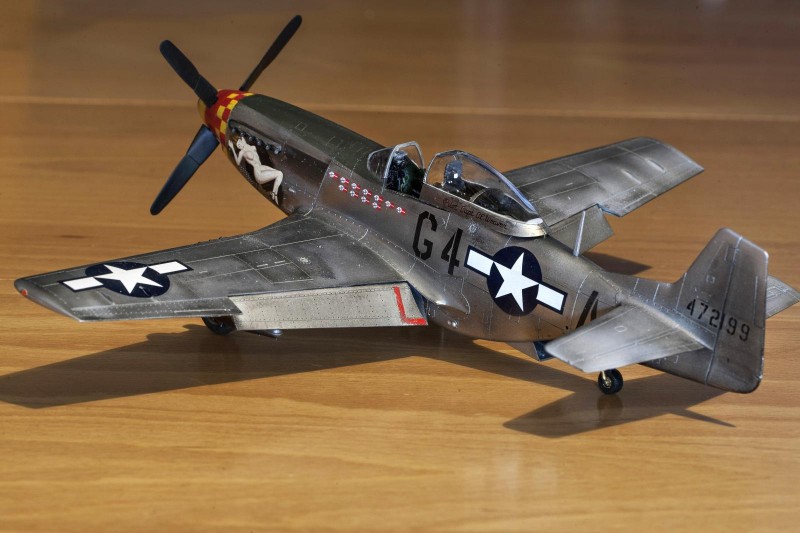
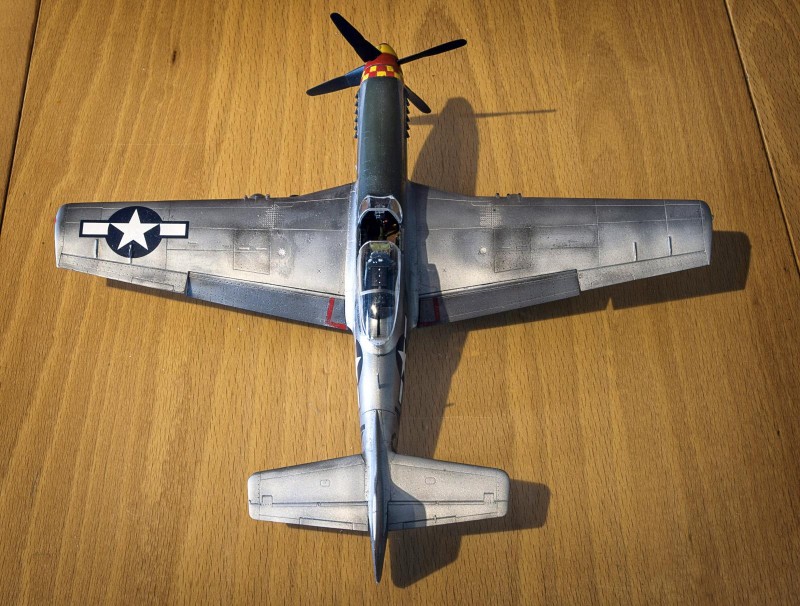
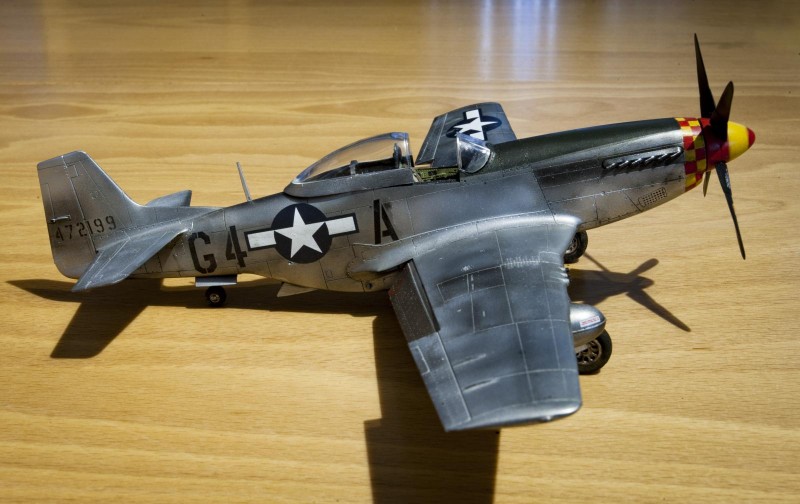
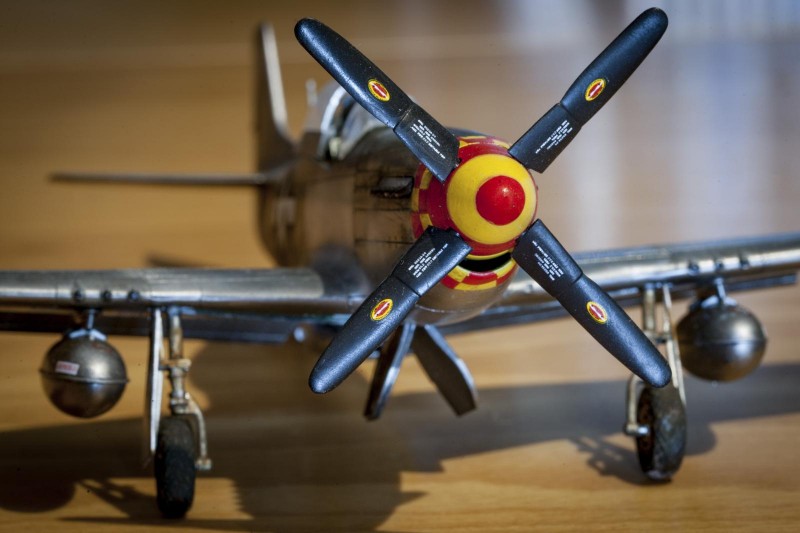
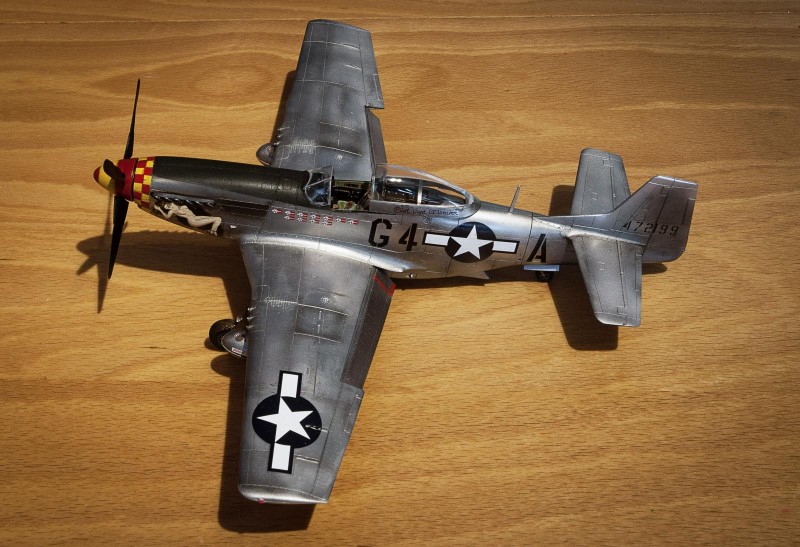
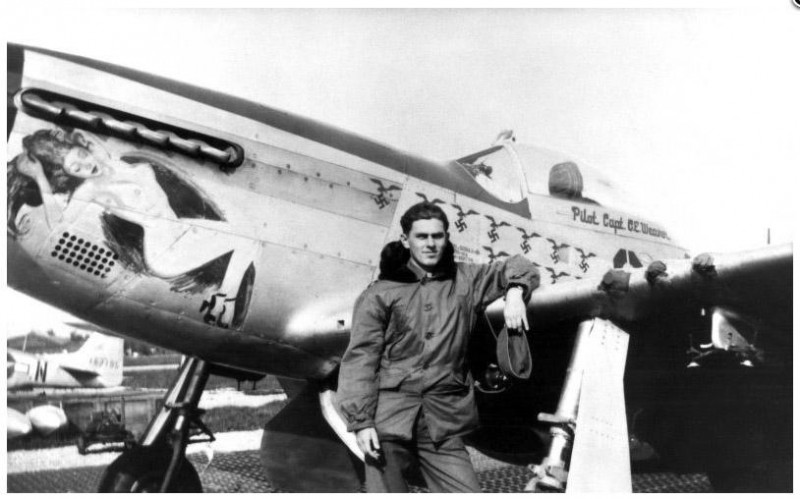
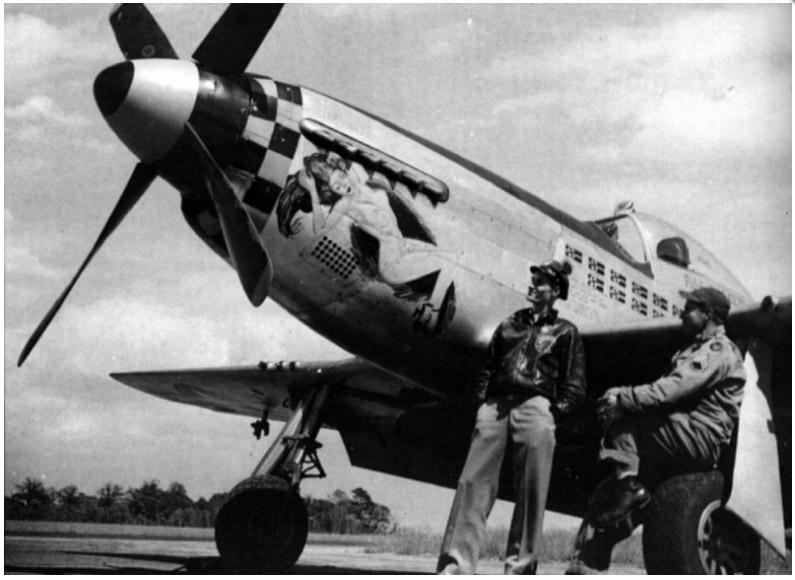
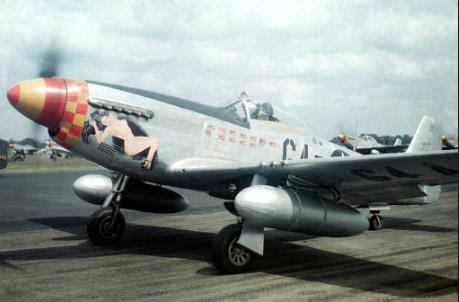

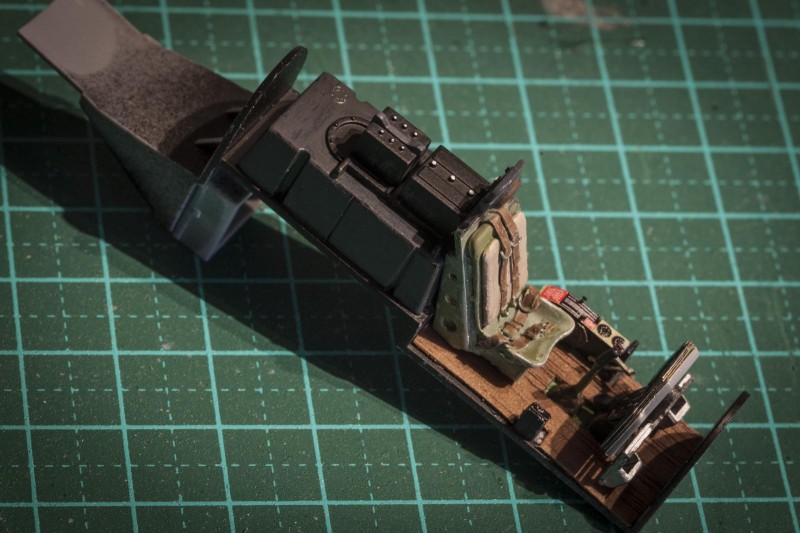
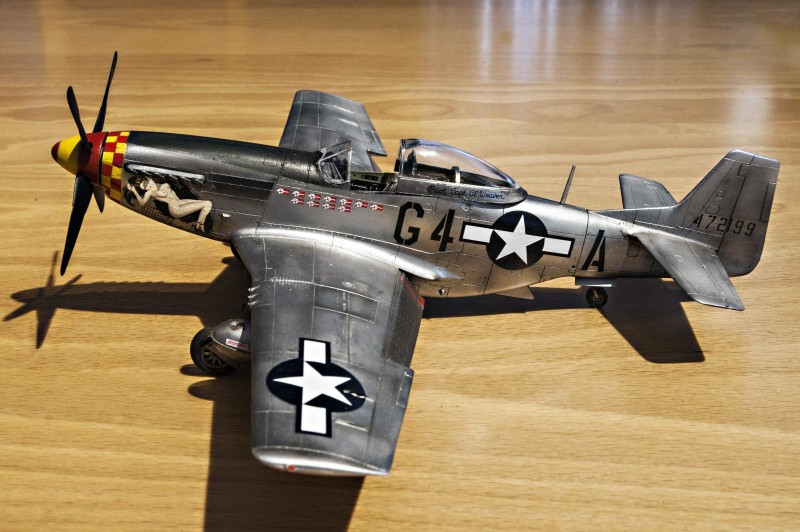
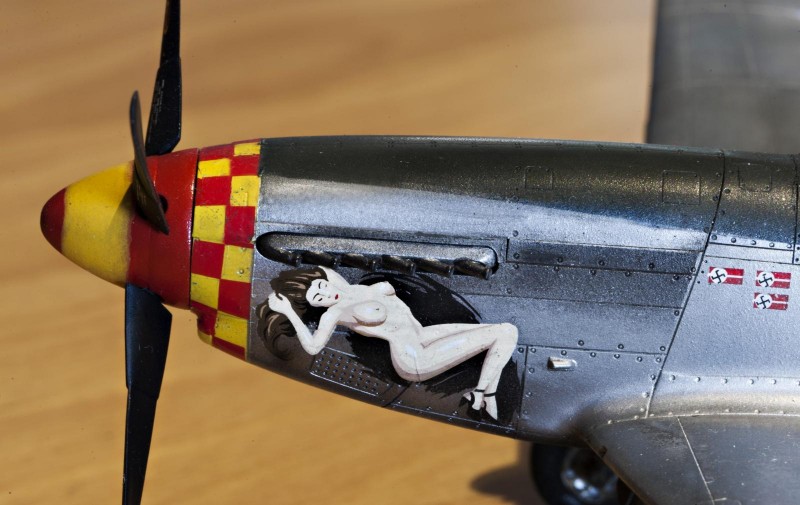
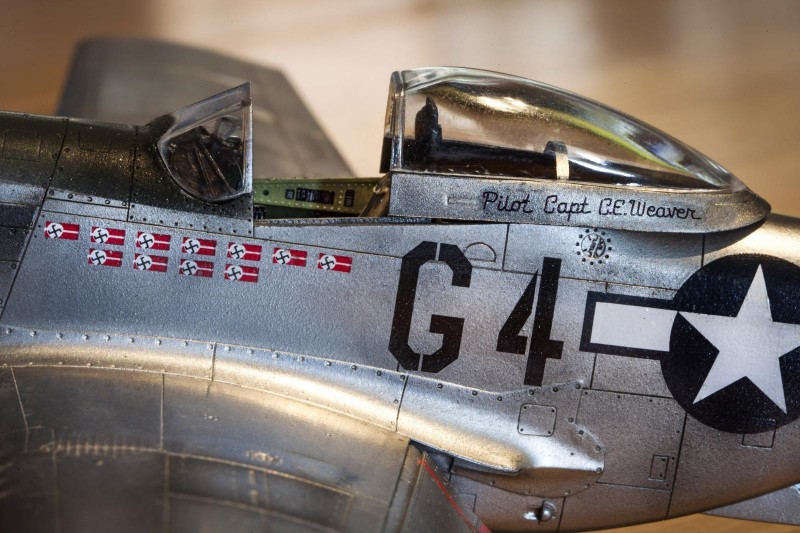
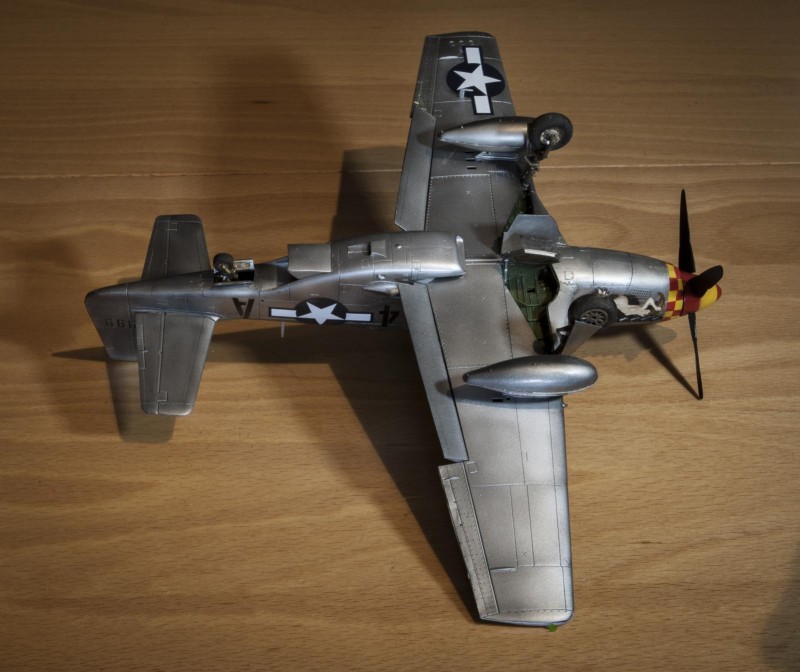
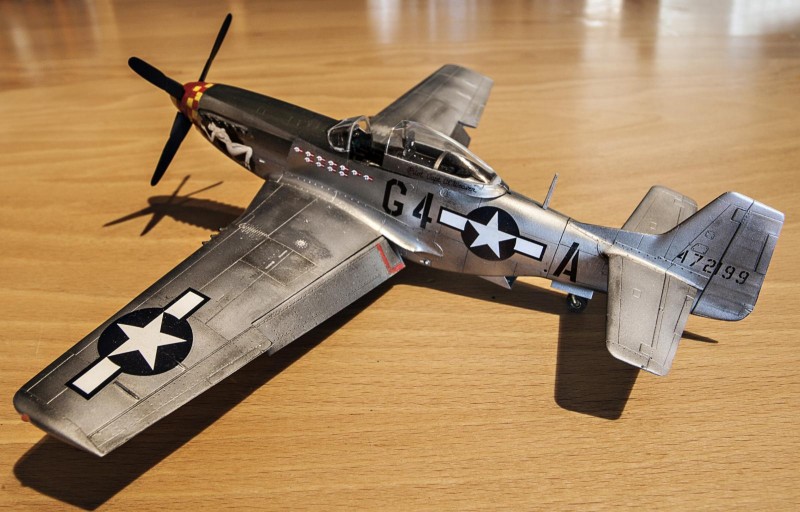
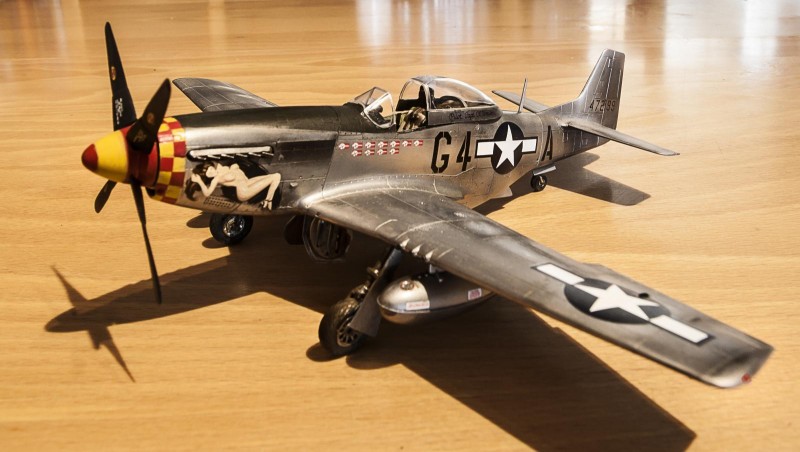




Wonderful work, Paul. For my money you got that worn NMF nailed. A really interesting post with a terrific model (yes, I do mean the Pony). Fantastic.
I totally agree with David...that NMF finish is "unique" so say the least. I've not seen one quite like it before - very well done, Paul.
Great looking Mustang!
Nice job Paul. Finish is excellent.
I googled Major Atlee G. Manthos to check out that collection. Interesting biography and the images are a great find. Definite bookmark for the future.
The finish and interior work is true art. Amazing stuff.
Paul, love the NMF painting. I didn't realize there were multiple versions of the aircraft and nose art! Learned something today! Always a good thing.
Really nice "Stang". Love it.
Hello Paul,
I have to echo the sentiments posted above. Trying to achieve a Bare Metal Finish has to be one of the hardest things to do, and get it to look "right". You have done so perfectly. I really like how the Mustang turned out. Nice touch with the wooden floor. I also noticed the "Kill" marks were different in two of the original B & W photos.
The article / history lesson and having some original photos (the Kodachrome color photo is like icing on the cake !) makes this one stand out even more.
Well done Sir ! and two thumbs up my friend.
Ditto the comments on the finish - best looking NMF I've seen. It's hard to duplicate, but you nailed it.
Gotta love the artwork... 🙂
A great build and an interesting bit of history.
Very nice, Paul, great addition to the group build.
Thank you all for the kind comments gentlemen!
Excellent ‘stang Paul. Really enjoyed the background research. Looks like you’ve mastered the NMF. Keep building Partner.
Beautiful! And the plane looks great, too!
Great story and build
Beautiful weathering my friend! Such a beauty